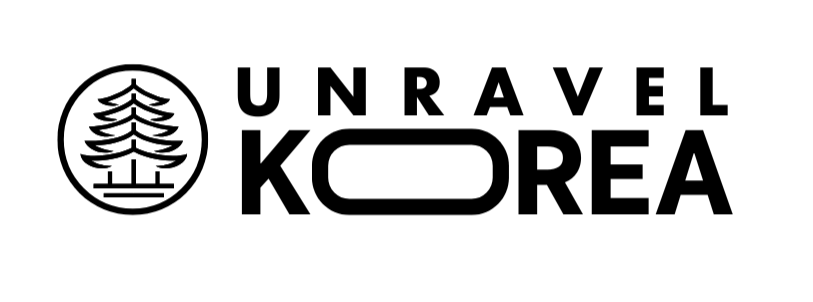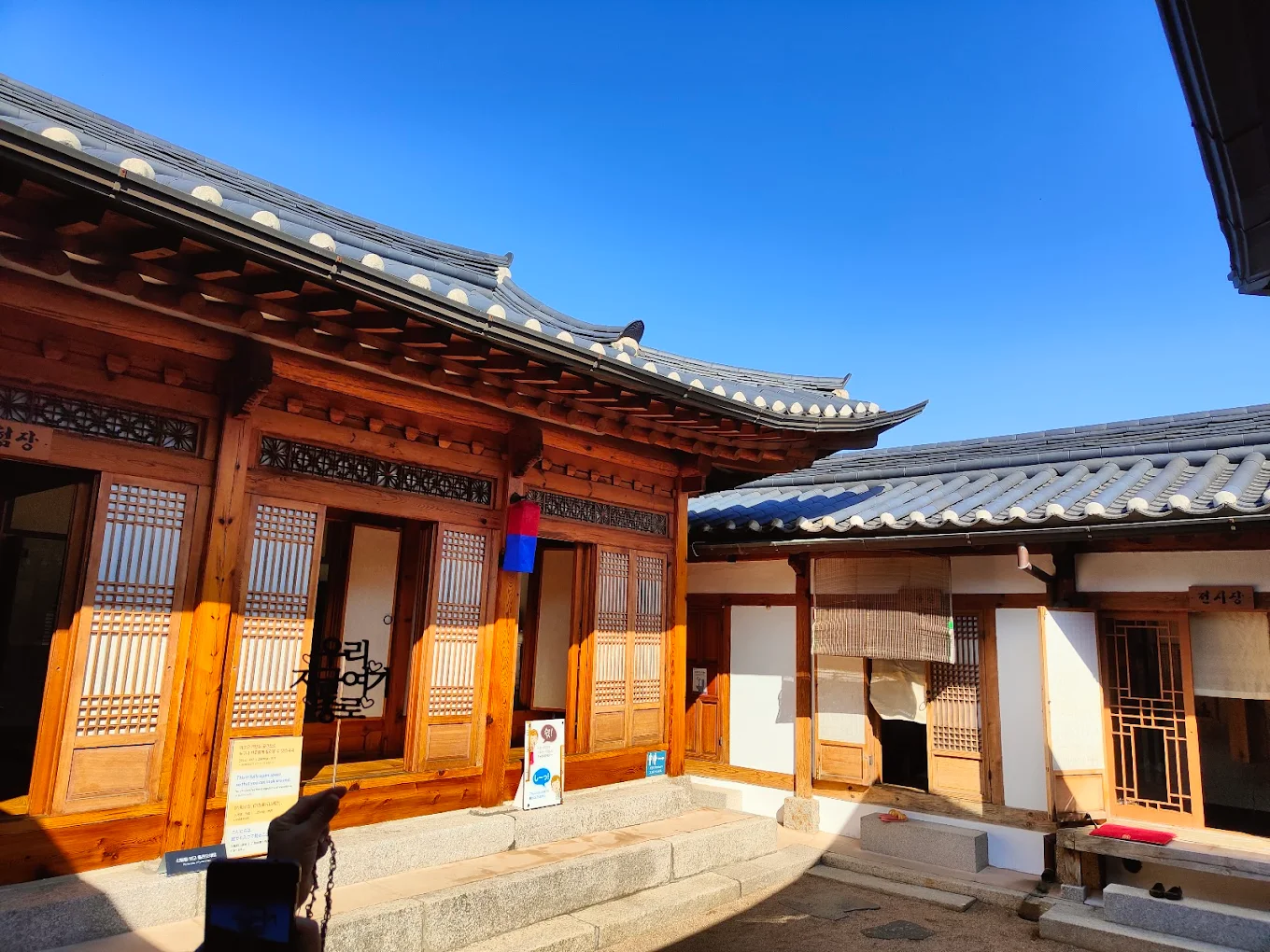Bukchon Hanok Village is a traditional Korean residential area dating back over 600 years, located between two major palaces (Gyeongbokgung and Changdeokgung) in central Seoul. Unlike a museum or tourist attraction, this is a real living neighborhood where people actually live and work in beautifully preserved traditional Korean houses called hanok.
Bukchon Korea represents one of Seoul’s most important cultural heritage sites, featuring hundreds of hanok houses that showcase traditional Korean architecture with their distinctive curved rooflines, wooden structures, and interior courtyards.
Bukchon Meaning & What Does Bukchon Literally Mean?
What does Bukchon literally mean? The name Bukchon translates to “North Village” in Korean (북촌 = 북 “north” + 촌 “village”). It gets this name because it’s located north of Cheonggyecheon Stream and was historically where Korean nobility and high-ranking officials lived during the Joseon Dynasty.
What is Bukchon Known For?
This historic area is famous for:
Traditional Architecture: Best-preserved hanok houses in Seoul with authentic Korean building techniques
Bukchon Yukgyeong: The “Six Beautiful Views of Bukchon” – designated photo spots offering stunning perspectives of traditional houses with modern Seoul skyline
Cultural Experiences: Traditional tea houses, craft workshops, and cultural centers
K-Drama Filming Location: Featured in popular Korean dramas, attracting international fans
Bukchon Hanok Village History
Bukchon Hanok Village history spans over 600 years. Originally established during the early Joseon Dynasty (1392-1897), it served as a residential area for Korean aristocrats and government officials who wanted to live close to the royal palaces.
The area survived Japanese colonial rule, the Korean War, and rapid modernization that destroyed most traditional neighborhoods in Seoul. In the 2000s, the Seoul government began restoration efforts to preserve the remaining hanok houses, creating the cultural heritage site visitors see today.
Bukchon Hanok Village Opening Hours & Entrance Fee
Bukchon Hanok Village opening hours: 24/7 – it’s a public neighborhood with no gates
Bukchon Hanok Village entrance fee: Completely FREE – it’s a residential area, not a paid attraction
Important notes:
Individual hanok houses, museums, and cultural centers have their own operating hours
Some tea houses and shops close on Mondays
Residential areas should be visited respectfully during daylight hours
Is Bukchon Hanok Village Worth Visiting?
Absolutely yes! Bukchon Hanok Village offers an authentic Korean cultural experience you can’t find elsewhere in Seoul. The contrast between traditional hanok architecture and modern skyscrapers creates stunning photo opportunities, while the narrow alleys and traditional buildings transport visitors back centuries.
Perfect for travelers who want:
- Authentic Korean architecture and culture
- Instagram-worthy traditional house photography
- Free cultural experiences in central Seoul
- Easy combination with nearby palaces and attractions
- Peaceful escape from Seoul’s modern hustle
Getting There
Subway (Most Convenient):
- Line 3: Anguk Station (Exit 2) – 5 minutes walk to main area
- Line 3: Gyeongbokgung Station (Exit 2) – 10 minutes walk
- Line 1: Jongno 3-ga Station (Exit 1) – 15 minutes walk
Bus Routes:
- Blue buses: 109, 151, 171, 172
- Village buses: Jongno 02, Jongno 03
- Stop: Anguk Station or Bukchon Traditional Culture Center
From Popular Areas:
- Myeongdong: 20 minutes by subway (Line 4 → Line 3)
- Hongdae: 35 minutes by subway (Line 2 → Line 3)
- Insadong: 10 minutes walk
Here you can explore Namsangol Hanok Village, Changgyeonggung Palace & here you can visit to see the 10 famous temples of Seoul that are very close to you.
Bukchon Yukgyeong - The Six Beautiful Views
Bukchon Yukgyeong refers to six designated viewpoints offering the most photogenic perspectives:
- Viewpoint 1: Changdeokgung Palace stone wall area
- Viewpoint 2: Hanok houses with curved rooflines
- Viewpoint 3: Steep downhill street with traditional houses
- Viewpoint 4: Junction of hanok alleys
- Viewpoint 5: Traditional houses against modern city backdrop
- Viewpoint 6: Panoramic view of Seoul from hilltop location
Photography tip: Visit early morning (8-10 AM) for best lighting and fewer crowds.
What to Do in Bukchon
Cultural Experiences:
- Traditional tea houses: Enjoy Korean tea in authentic hanok settings
- Hanbok rental shops: Dress in traditional Korean clothing for photos
- Craft workshops: Try traditional Korean crafts like pottery or calligraphy
- Cultural centers: Learn about Korean traditional culture
Photography & Sightseeing:
- Walk the alleys: Explore narrow streets between hanok houses
- Visit the six viewpoints: Capture iconic Bukchon scenes
- Hanok architecture: Study traditional Korean building techniques
- Sunset views: Evening light creates magical atmosphere
Bukchon Hanok Village offers travelers an authentic glimpse into traditional Korean life while remaining completely accessible and free.
The contrast between 600-year-old hanok houses and Seoul’s modern skyline creates a unique experience that captures both Korea’s rich heritage and dynamic present.

